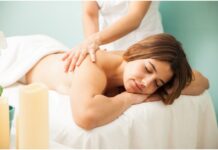Athlete’s foot is a very common fungal infection that affects as many as 70% of the population at some point in their lives. However, it does tend to be more common in males and not often seen in children under the age of 12.


How to detect athlete’s foot
One of the main symptoms of athlete’s foot is itching of the feet, but it’s not the only cause, and it’s not always present, so this alone is not enough to diagnose the condition. Another tell-tale sign can usually be seen between the toes (generally the last two). The area may be dry, red, blustering, peeling, scaling, or cracking.
Quite often the condition can be cleared up with a dose of over-the-counter medicine, but you need to make sure it is athlete’s foot that you have first. Some other disorders can also present themselves in a similar way to athlete’s foot. If you are unsure, seek advice from a podiatrist first before starting any treatment.
What causes it?
Athlete’s foot is caused by a fungus that’s often spread via the following:
- Using the same shoes for both casual and athletic use.
- Not rotating shoes in between uses. Rotation allows the shoes time to dry and slows/stops the growth of mold spores within the shoe.
- Wearing shoes/socks made of non-breathable fabric that doesn’t allow any air to circulate.
- Not washing and drying your feet properly after bathing or after athletic activity. This is also includes continuing to wear socks after they’ve become wet.
- Wearing other people’s socks/shoes.
- Not changing socks regularly. You should change socks every time you change your shoes.
- Wearing excessively worn athletic shoes.
- Not wearing socks/stockings when trying on shoes in store.
- Wearing thick shoes/socks that make the feet sweat.
What’s the cure?
It’s always best to get any new symptom checked out by a professional so that the best course of treatment can be advised. It may be that the doctor recommends an over-the-counter anti-fungal agent. However, in more severe cases, the patient may be prescribed an oral anti-fungal medicine containing ketoconazole or sulconazole. A course of antibiotics may also be required if a second bacterial infection is present.
Who is most at risk?
Anyone can get athlete’s foot if they put their feet in the right conditions. If you are prone to doing any of the things in the “what causes it” section then you have a higher chance of getting athlete’s foot. Those who fail to wash and dry their feet properly before putting on their shoes are also a higher risk.
How to prevent it
To avoid getting athlete’s foot you just need to follow a few precautions and use common sense. Always promote dryness, air circulation, and light and keep your feet clean at all times. Antifungal powders can be useful, particularly in the summer, so dust a little into shoe insoles and socks in order to inhibit the growth of any spores. Walking barefoot around the house or wearing sandals as often as possible ensures your feet get lots of breathing space.
Don’t exercise in a pair of shoes and then proceed to wear them for the remainder of the day. Also, don’t continue to wear shoes once they have become wet. Change your running shoes regularly as they are an ideal breeding ground for fungus the more worn they become. When out shoe shopping always ensure you have some form of foot protection with you as you never who tried on the shoe before you and what infection they may have had.
Finally, avoid sharing shoes at all costs as again is just asking for trouble.

























